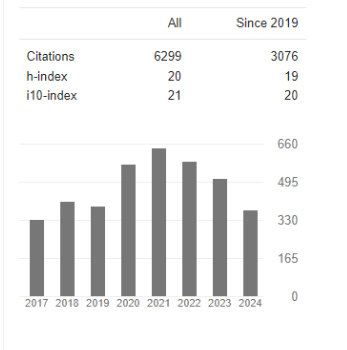Acute Appendicitis in Adults in an Urban-Rural Setting In Democratic Republic of Congo (DRC)
Abstract
Grodya Tchomia, Dada Sasa, Mazoba Tacite
Objective: Our objective was to describe the epidemioclinical profile of appendicitis in the digestive surgery department of Saint Luc hospital in Kisantu.
Method: Descriptive documentary study, based on the description of the files of the patients admitted for appendicitis in our study environment during a period of 10 years, that is to say from January 1, 2010 to December 31, 2020 carried out in the digestive surgery department of the Saint Luc hospital of Kisantu.
Results: The median age was 30 years with extremes of 18 years and 30 years with a female predominance (Sex-ratio=1,2). Pain in the form of abdominal cramps (94.1%) and located in the right iliac fossa for 44 patients (86.3%) was the main reason for consultation. Rebound was found in 47 patients (92.2%) and McBurney in 44 patients (86.3%). The approach for the majority of appendectomies was the median and subumbilical incision in 66.7%. Catarrhal appendicitis was the most common form in 73.3% of cases. Appendectomy with burial of the stump was performed in most cases with 71%. The postoperative evolution was favorable in 63% of cases. Complications were noted in 37% of cases.
Conclusion: Appendicitis often affects the young and female subject. Its clinic is mainly made of abdominal pain, localized to the right iliac fossa, while its management is surgical, preferentially via the median and sub-umbilical incision in our study environment. The postoperative course is generally favorable.




